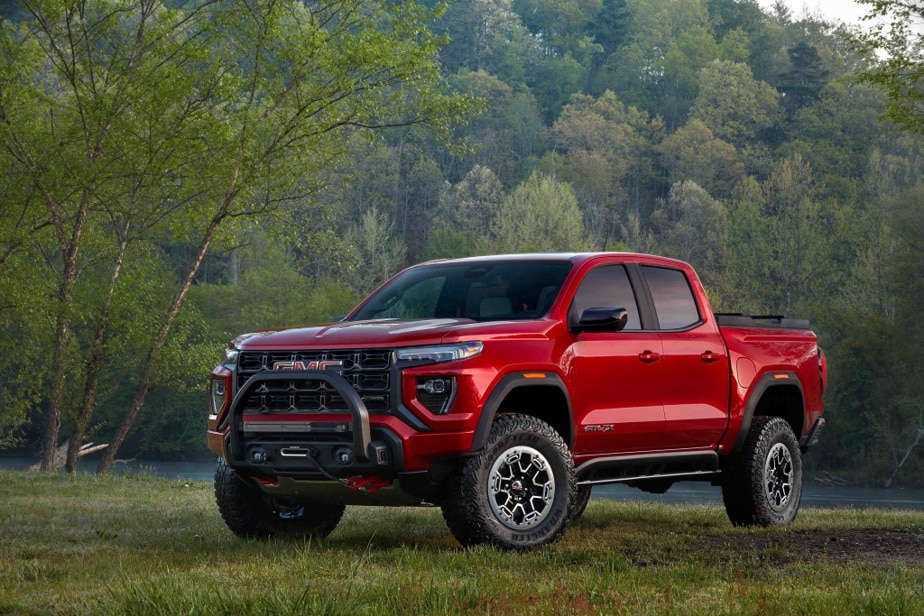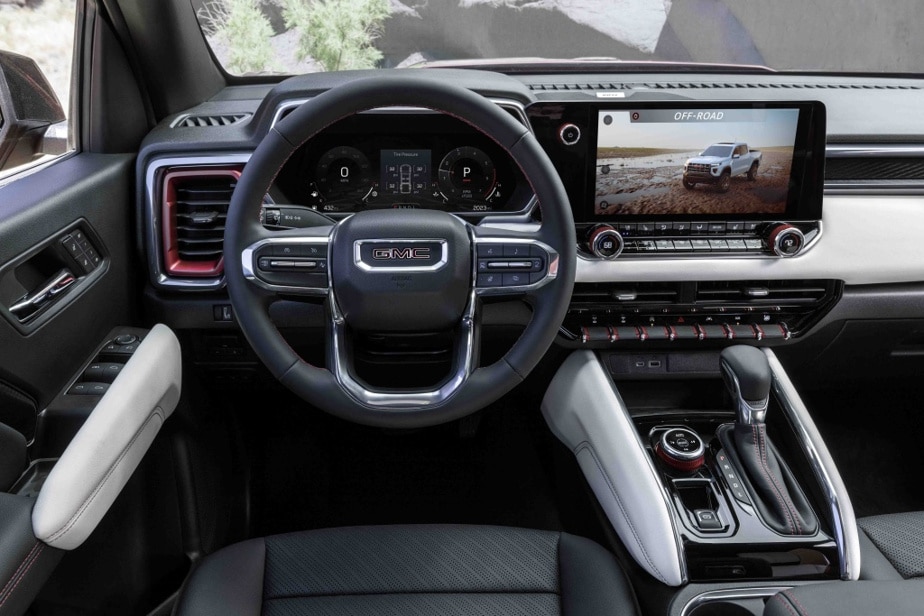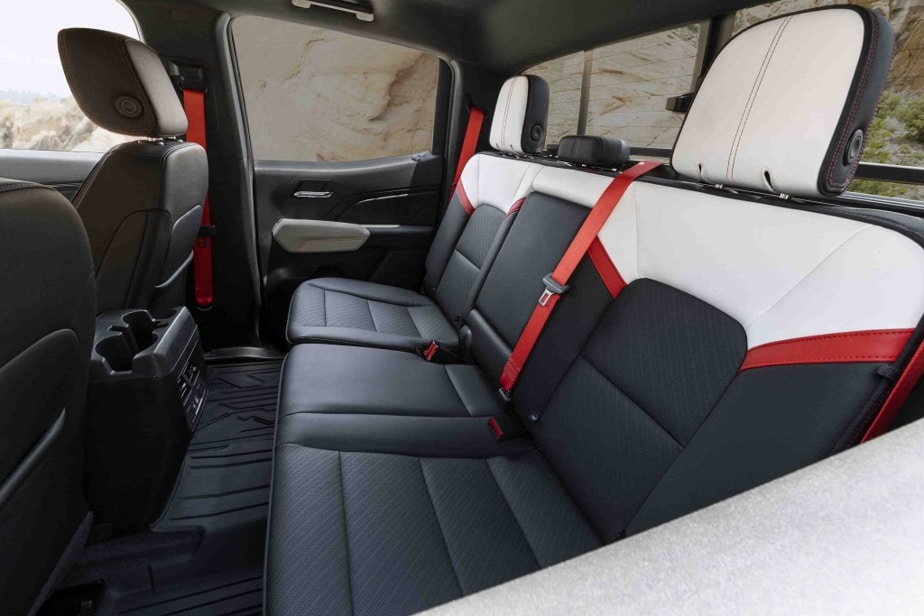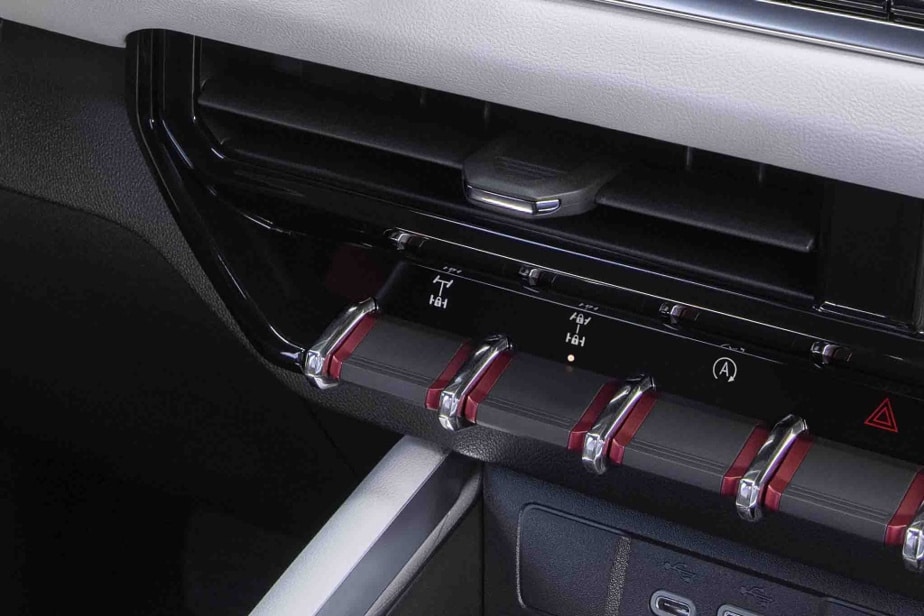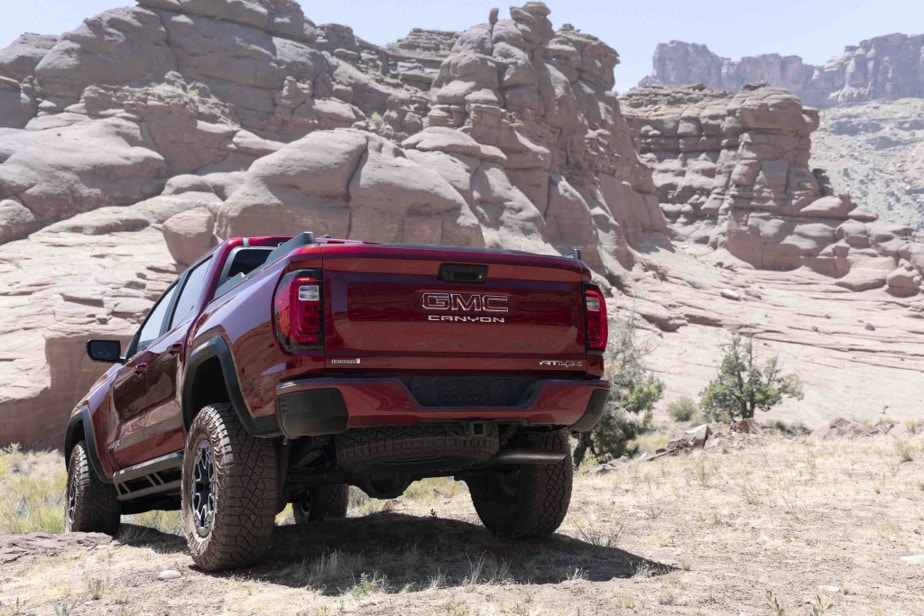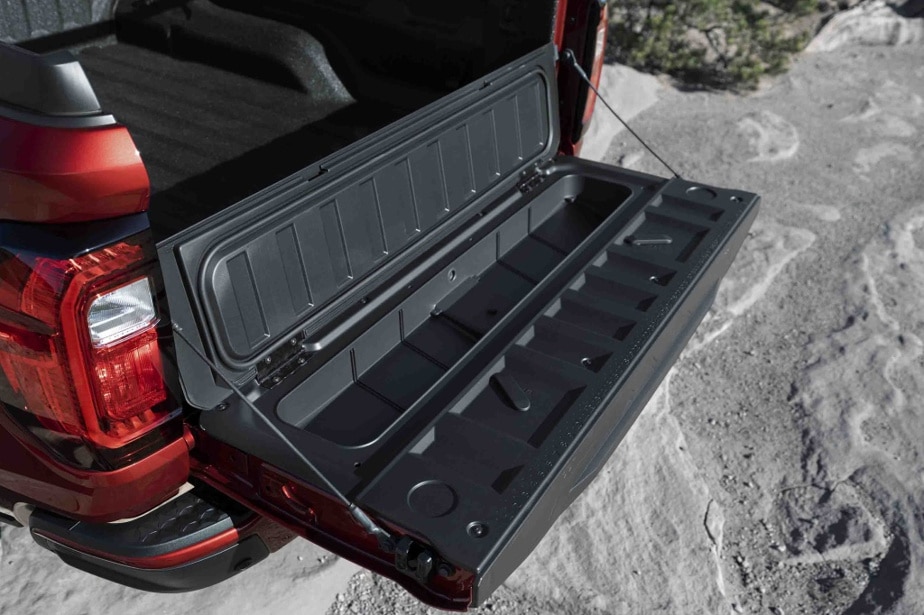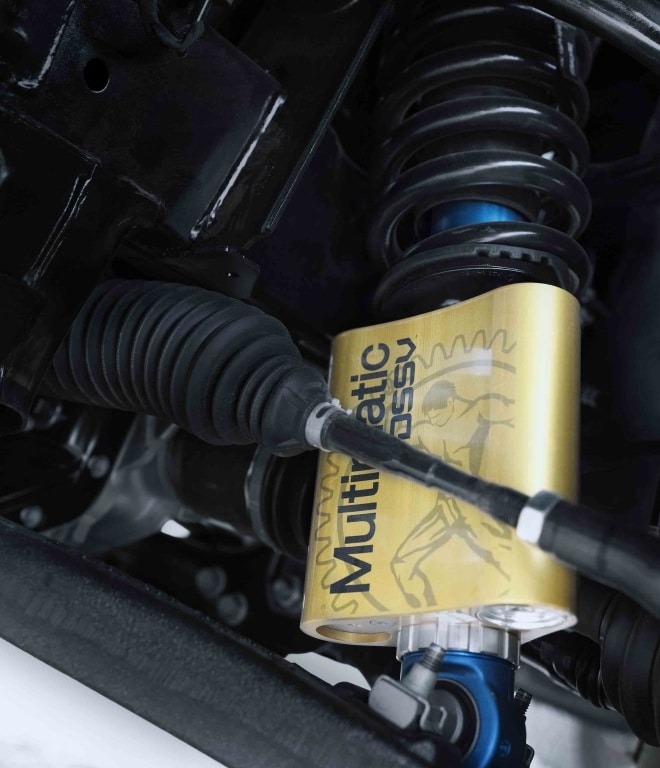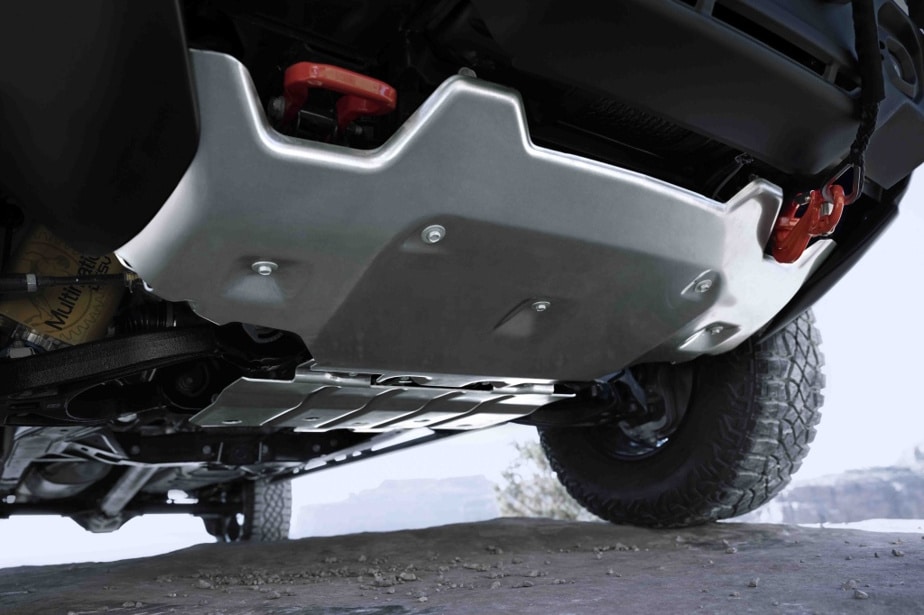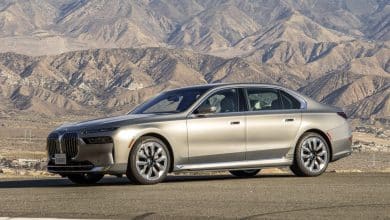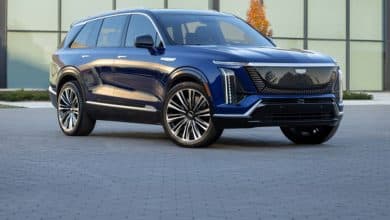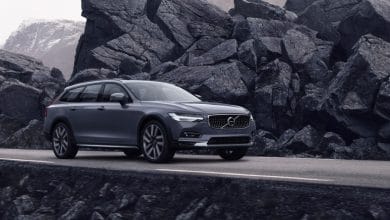
(Asheville, North Carolina) Third of the name, the Canyon gains in good manners and is more welcoming than ever.
Contents
A desire to surpass
-
PHOTO PROVIDED BY GMC
The wider tracks of the GMC Canyon not only provide it with increased stability, but also a unique suspension geometry.
-
PHOTO PROVIDED BY GMC
Part of the reason for the high price of this pickup is that it is only offered with a four-wheel drive mode.
-
PHOTO PROVIDED BY GMC
The Canyon gets a driver’s seat that is nothing short of spartan and full, configurable instrumentation.
-
PHOTO PROVIDED BY GMC
Inside, the coatings are noticeably softened, while the rear seats have lost their punitive character.
-
PHOTO PROVIDED BY GMC
GMC Canyon controls
-
PHOTO PROVIDED BY GMC
The boarding of the smallest travel bag requires that we cut corners on the living space of the passengers. It is indeed risky to leave a loose load in the large dumpster.
-
PHOTO PROVIDED BY GMC
The flap of the GMC Canyon
-
PHOTO PROVIDED BY GMC
The Canyon AT4 X’s Multimatic suspension and locking differentials make it a fierce opponent to the current Gladiator and Tacoma TRD Pro and Colorado ZR-2.
-
PHOTO PROVIDED BY GMC
A GMC Canyon shock absorber
-
PHOTO PROVIDED BY GMC
Protection under the GMC Canyon
1/10
Traditionally dominated by Toyota, the midsize pickup sector sees the arrival of several new models this year, including the GMC Canyon. This one intends to make a great breakthrough in its new clothes after having so far found itself in tow of its competitors.
The Canyon recruits its customers among individuals. Rarely with professionals. The latter, at GMC, prefer the Sierra, more massive, harder to the task. The Canyon, on the other hand, makes its owners happy weekends, occasionally transporting bulky materials, towing a boat, a snowmobile or even a trailer.
The third generation digs this furrow opened by its predecessors. On this side, appearances are saved. For the rest, the new Canyon has changed a lot. Its designers have, on the one hand, injected it with a dose of temerity to better face muddy paths and undergrowth. On the other hand, its interior presentation has softened, even gentrified. Especially in its most expensive versions.
Perhaps more importantly, the Canyon seeks to disassociate itself from its Chevrolet counterpart, the Colorado. While this General Motors (GM) pickup duo has a lot in common, GMC management is careful to muddy the waters (a little). In order to break away from this nagging perception that the Canyon is just a Colorado living under an assumed name.
To convince us otherwise, the designers of the Canyon are quick to point out the differences. One of the biggest concerns the GMC’s wider tracks, which not only provide it with increased stability, but also a unique suspension geometry. In addition, the Canyon currently benefits from more powerful mechanics than its Chevrolet counterpart.
Like a car
Right now, the Canyon is the most accomplished illustration of this new generation of midsize pickups.
The structure remains rustic, but this GMC does not forget to cover its seats with leather or to acquire the latest in terms of connectivity. The Canyon gets a driver’s seat that is nothing short of spartan and full, configurable instrumentation.
However, we will challenge the idea of eliminating the headlight control in favor of an icon embedded in the central screen. Hello distraction! Asked about this, one of the designers of the Canyon was in great difficulty to justify the benefit of this “advance”.
Inside, the coatings are noticeably softened, while the rear seats have lost their punitive character. As long as these are occupied, the boarding of the slightest travel bag requires that we cut corners on the living space of the passengers. It is indeed risky to leave a loose load in the large dumpster. Covering the latter does not really solve the dilemma. In addition, for a vehicle placed under the sign of versatility, the storage spaces remain scattered. However, we should underline the good idea of installing a box in the interior part of the leaf. On the other hand, in terms of standard features, the Canyon is much less stingy, including on the entry-level model (Elevation). That goes a long way to justifying the high price tag of this pickup that’s only offered with an all-wheel-drive mode.
Simplicity of the offer
You don’t necessarily have to wear steel-toed boots to drive the Canyon, but you should still appreciate the rough rides. However, at the wheel of this GMC, there is real progress in terms of filtering road irregularities and suspensions, which jump, but without compromising comfort. The steering, which some will find too geared down, benefits from well-measured assistance and a touch of the road that is more sensitive than before. Additionally, as part of this extensive redesign, the Canyon gets higher ground clearance.
The Canyon’s hood now lifts to accommodate a 2.7L four-cylinder. The previous-generation powertrains have all been sacrificed, but towing capacity has been preserved. Unfortunately, this feature could not be verified during the media preview of this model.
Supercharged by turbocharger, this mechanism already sits in the antechamber of GM pickups beefier than the Canyon. This is sure to reassure some about its efficiency and performance. Not everyone is of the same opinion. If we must welcome the decision to reduce the engine capacity, we realize in use that it was perhaps not the best idea. First, because of the consumption of this 2.7 L. It ingests more hydrocarbons than the 3.6 L six-cylinder and the 2.8 L turbodiesel offered on the previous version. Then, despite its astonishing torque and its equally remarkable ability to pull a load, this 2.7 L is rather loud and harsh. In addition, there is a significant response time when requested quickly. This will give some users the impression of a relationship that is not always consistent with the eight-speed automatic transmission that comes with it.
Of all the variations offered, the Elevation appeared to be the most homogeneous of all. And good news, it is also the most affordable financially. The AT4s and Denali don’t do enough to convince us to pay more. The only exception being probably the AT4 X. Its Multimatic suspension and its lockable differentials make it a fierce opponent to the current Gladiator and Tacoma TRD Pro and Colorado ZR-2. With a touch of refinement as a bonus. At the asking price, we asked for nothing less.
Suggested retail price
From $48,497 to $67,797
Consumption
12.6L/100km
WE love
- Towing capacity maintained
- More than a Chevrolet (Colorado) dressed up
- Solid behavior
We love less
- Disappointing consumption
- Limited choice (cabin, tipper) and rising prices
- Some commands to review (distraction)
Our Verdict
The AT4 and Denali versions no doubt make you dream, but it’s the Elevation livery that we buy.
The Press will soon publish the test of the following vehicles: Alfa Romeo Tonale, Ioniq 6, Porsche Cayenne, Subaru Crosstrek and Toyota Highlander. If you own one of these vehicles or are considering purchasing one, we would love to hear from you.
Technical sheet
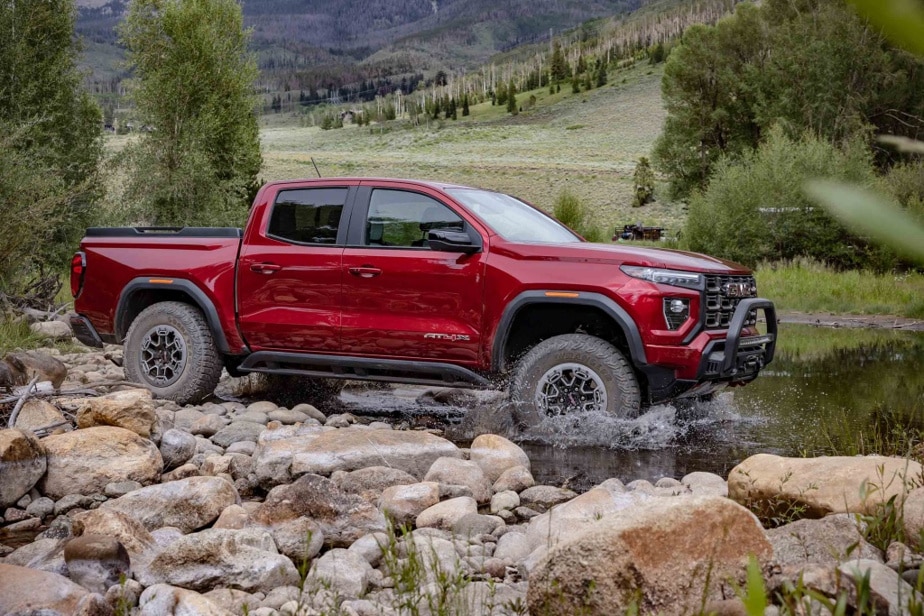
PHOTO PROVIDED BY GMC
GMC Canyon
Performance
Engine
- Supercharged 2.7L L4 DOHC
- 310 hp at 5600 rpm
- 430 lb-ft of torque at 3000 rpm
Performance
- Empty weight: from 2009 kg to 2363 kg
- Ground clearance: from 245 mm to 271 mm
- Maximum towing capacity: from 2495 kg to 3493 kg
Gearbox
- Standard: 8-speed automatic
- Optional: none
- Drive Mode: 4×4
Tank and gasoline
Tires
- 265/65R18 (Elevation and AT4)
- 285/70R17 (AT4X)
- 275/60R20 (Denali)
Tank capacity and recommended gasoline
Dimensions
- Wheelbase: 3337mm
- Length: 5416mm / Height: 2028mm (2072mm [AT4X]2042mm [Denali])
- Width: 2144mm
The diesel leaves the scene

PHOTO PROVIDED BY GMC
The diesel engine does not accompany this new version of the Canyon.
Persona non grata in the eyes of environmentalists, the diesel engine does not accompany this new version of the Canyon. The 2.7 L (gasoline) that now sits under the hood produces more power (310 hp compared to 189 hp) and more torque (430 lb-ft compared to 369 lb-ft). Gains obtained at higher rpm. For the third-generation Canyon, the important thing was to preserve that towing capacity. The objective was achieved, but at the cost of higher consumption. According to data from the US Environmental Agency, the 2.8 L turbodiesel engine ingested an average of 2 L/100 km less than the current 2.7 L.
Easier to make choices

PHOTO PROVIDED BY GMC
The dumpster and its storage
Last year, it was necessary to choose the engine, the mode of drive, the type of cabin and the length of the body. A real torture for the hesitant buyer. For 2023, we erase all that. All Canyons share the same characteristics listed above. The differences are observed on the side of the variations. For example, the AT4X has a higher ground clearance than the others, but cannot tow such a heavy load. Elements – and there are others – to check before making a choice.

